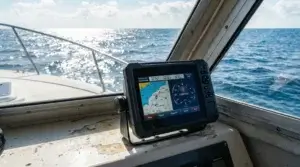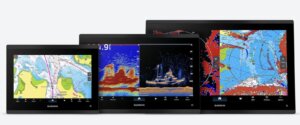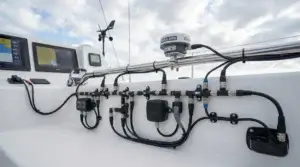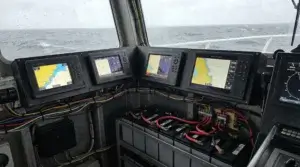The Optimus 2.0 GPS Tracker is a portable device that tracks the real-time location of vehicles, people, and assets. It uses Global Positioning System (GPS) technology to determine the device’s location. It sends the data to the cloud-based tracking software, which can be accessed through a smartphone app or a web browser.
The price is around $30 on Amazon, and here are some of the key features of the Optimus 2.0 GPS Tracker include:
• Real-time tracking: The device provides up-to-date location data, allowing users to track their vehicles or assets in real-time.
• Geo-fencing: The device can be configured to send alerts when the device enters or exits a designated area.
• Customizable alerts: Users can set up customized alerts for speed, location, and other parameters.
• Long battery life: The device has a long battery life, with some models lasting up to two weeks on a single charge.
• Easy to use: The device is easy to set up and use, requiring no installation.
Overall, the Optimus 2.0 GPS Tracker is a reliable and convenient solution for individuals and businesses that need to track their vehicles, assets, or loved ones.
A bundle with a Waterproof Twin Magnet Case typically refers to a package deal that includes a real-time GPS tracker and a specialized protective case designed to hold the tracker. The case is typically waterproof, which means that the device can be used in harsh weather conditions or underwater environments without damage.
The Twin Magnet Case is designed to hold the GPS tracker securely and discreetly. Two powerful magnets keep the case in place even during movement or vibration, making it ideal for tracking vehicles, assets, or people without drawing attention to the tracker itself.
The case’s waterproof design ensures that the device stays safe and dry, even when submerged in water. This feature is handy for marine applications, such as tracking boats or ships, or for tracking assets that may be exposed to water or moisture.
The bundle may also include additional features, such as long battery life, real-time tracking, geofencing, and customizable alerts. These features can help businesses and individuals track their assets or loved ones more effectively and efficiently.
Optimus 2.0 GPS Tracker is advertised to have a battery life of up to 2 weeks, reporting frequency at 1 minute; it means that the device can operate continuously for up to 2 weeks on a single battery charge while sending location data to the server or device at 1-minute intervals.
In other words, the GPS tracker will report its location every minute, and the battery will last up to two weeks before recharging or replacing it. The reporting frequency of 1 minute is typically a standard option for many GPS trackers and provides a good balance between the frequency of updates and battery life.
It’s important to note that the battery life of a GPS tracker can vary depending on several factors, including the reporting frequency, the strength of the cellular signal, and the type of battery used. The battery life may be shorter if the reporting frequency is set to a higher rate or if the tracker is used in areas with poor cellular coverage.
Overall, a battery life of up to 2 weeks with a reporting frequency of 1 minute is a reasonable and practical option for many GPS tracking applications, such as fleet management, personal tracking, and asset tracking.
Email and text message alerts are standard features in GPS trackers that allow users to receive notifications about specific events or activities related to the tracker. The following are some of the alerts that a GPS tracker may send via email or text message:
1. Movement Alerts: The GPS tracker may send an alert when it detects movement, indicating that the device or the object it’s attached to is on the move.
2. Speeding Alerts: The GPS tracker may send an alert when it detects the device or vehicle moving above a set speed limit.
3. Geofencing Alerts: The GPS tracker may send an alert when it enters or leaves a specific geographic area, known as a geofence. This feature is helpful for tracking vehicles or people in a specific location, such as a construction site or school campus.
4. Low Battery Alerts: The GPS tracker may send an alert when the battery is low, indicating that the device needs to be charged.
5. SOS Button Alerts: Some GPS trackers have an SOS button that can be pressed in an emergency. The tracker may send an alert when the SOS button is pressed, notifying the user or designated emergency contact.
Email and text message alerts provide real-time notifications to users, allowing them to take immediate action if necessary. They are valuable for businesses or individuals who need to monitor their assets or loved ones closely.
How It Works:
First, the Tracking unit receives a GPS signal from the sky,
Next, a second signal is sent from The Tracking unit to our servers, using Cellular Phone Company networks for real-time tracking. When no cellular signal is available, the Tracking Unit will save the track in its memory until it regains it. Battery charge can last up to 2 weeks, depending on use. You can set low battery alerts.
Lastly, you will access all this information through the custom Smart Phone App or tracking website with Google Maps and tracking tools.
Signal Strength.
Metal objects, including those found inside cargo containers, trucks, and trailers, can weaken or disrupt GPS signals.
GPS signals work by receiving radio waves that can penetrate through most materials, including glass and plastic. However, metal can block or reflect GPS signals, making it difficult for GPS devices to receive accurate location data.
As a result, it’s generally not recommended to place a GPS tracker inside the cargo area of a metal box truck, container, or trailer. Doing so may result in poor GPS signal reception, leading to inaccurate location data or even complete signal loss.
If tracking a shipment inside a metal container is necessary, a few possible solutions can help improve GPS signal reception. One option is to use an external GPS antenna that can be mounted outside the container and connected to the GPS tracker inside. This can help to improve signal strength and accuracy.
Another option is to use a different type of tracking technology, such as RFID or Bluetooth, which may be better suited for tracking assets inside metal containers. These technologies use different frequencies and communication methods that may be less affected by metal interference.
In summary, it’s important to consider the limitations of GPS signal reception when placing a GPS tracker inside a metal box truck, container, or trailer. If GPS tracking is necessary, alternative solutions like external antennas or alternative tracking technologies may be needed to ensure accurate and reliable location data.
Service Price: $19.95/Month. Credit/Debit Card. SIM cards and a Data Plan are included.
Service coverage is limited to work only in the USA and Canada.
It should be said that Optimus 2.0 Reala-time GPS Tracker is a good and relatively cheap solution for both business and private needs.
As an Amazon Associate I earn from qualifying purchases.









